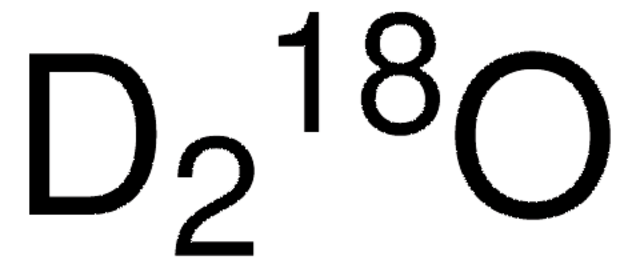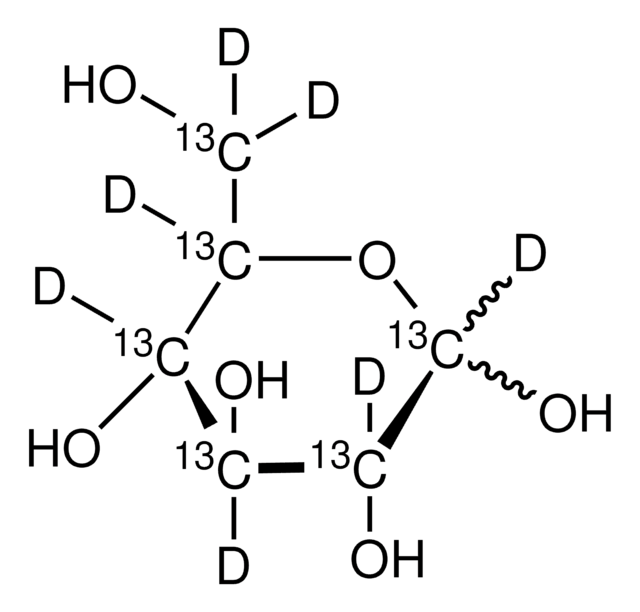756822
Deuterium oxide
filtered, 99.8 atom % D
Synonym(s):
Deuterated water, Heavy water, Water-d2
About This Item
Recommended Products
isotopic purity
99.8 atom % D
form
liquid
technique(s)
HPLC: suitable
bio NMR: suitable
protein expression: suitable
bp
101.4 °C (lit.)
mp
3.8 °C (lit.)
density
1.107 g/mL at 25 °C
application(s)
electronics
pharmaceutical
storage temp.
room temp
SMILES string
[2H]O[2H]
InChI
1S/H2O/h1H2/i/hD2
InChI key
XLYOFNOQVPJJNP-ZSJDYOACSA-N
Looking for similar products? Visit Product Comparison Guide
General description
Application
- High-resolution NMR (Nuclear magnetic resonance)
- FTIR (Fourier-transform infrared)
- Bio NMR studies
- Polarized visible Raman spectroscopic studies
- Protein expression
D2O is also used to prepare deuterium-labeled compounds in various fields such as pharmaceutical, bioanalytical, biological, and environmental chemistry via H-D exchange reactions to study drug metabolism mechanisms, reaction mechanisms, and the structure of biomolecules, and residual agrochemicals in foods using suitable analytical methods.
Packaging
Storage Class Code
12 - Non Combustible Liquids
WGK
nwg
Flash Point(F)
Not applicable
Flash Point(C)
Not applicable
Choose from one of the most recent versions:
Already Own This Product?
Find documentation for the products that you have recently purchased in the Document Library.
Customers Also Viewed
Related Content
Protein structure analysis aids in identifying disease biomarkers and drug targets crucial for therapeutic treatments.
Our team of scientists has experience in all areas of research including Life Science, Material Science, Chemical Synthesis, Chromatography, Analytical and many others.
Contact Technical Service




